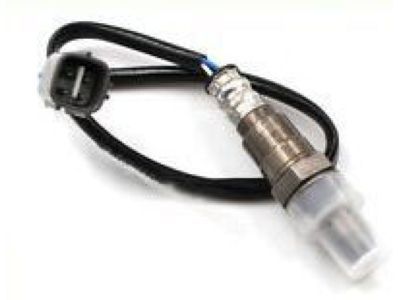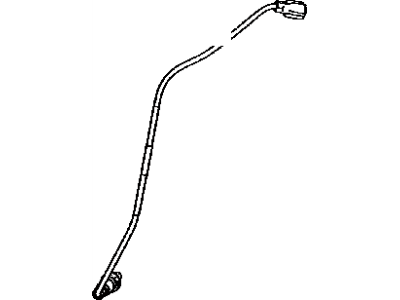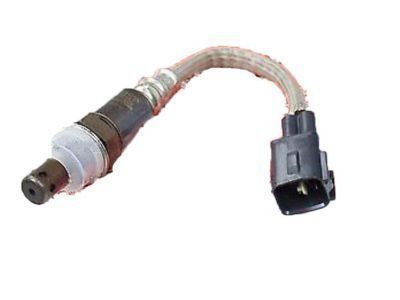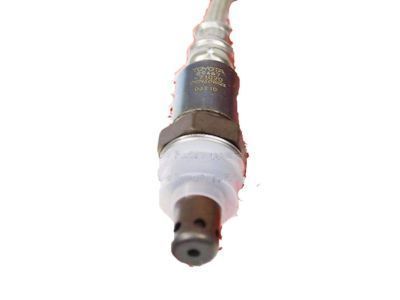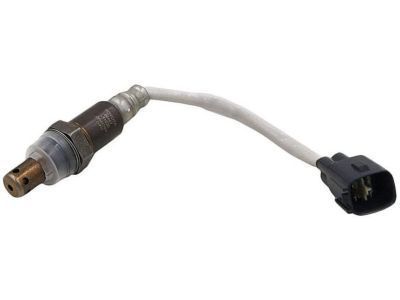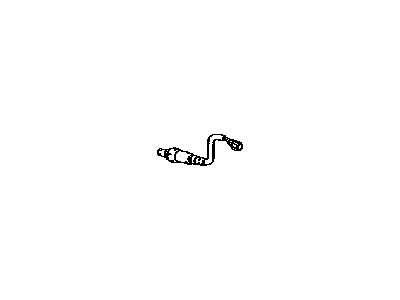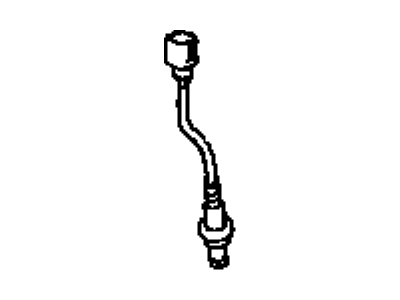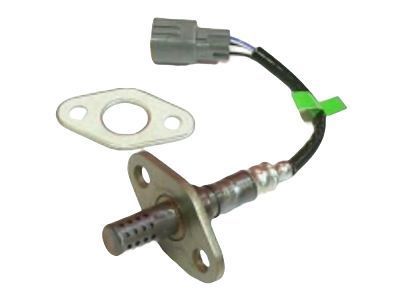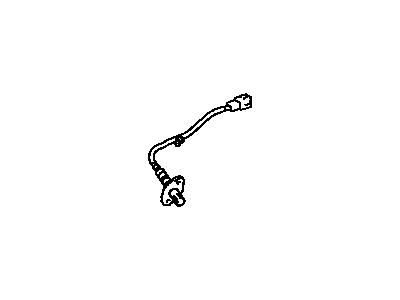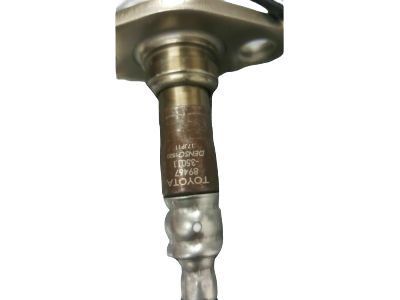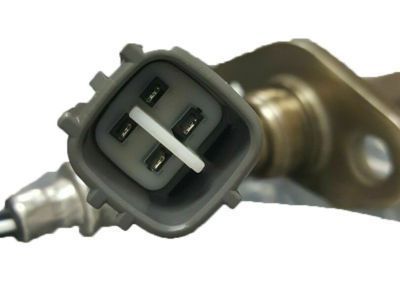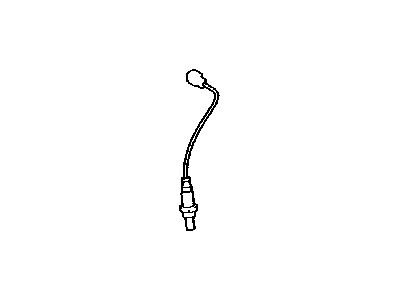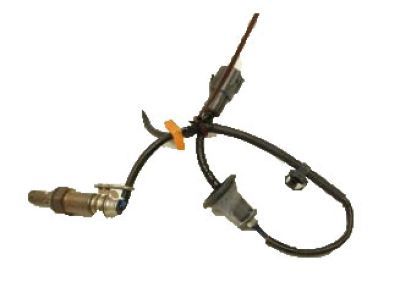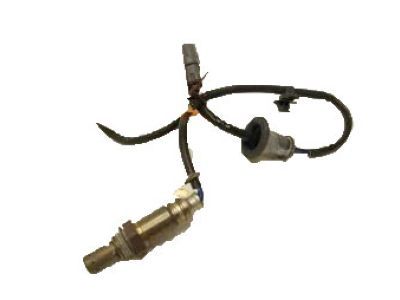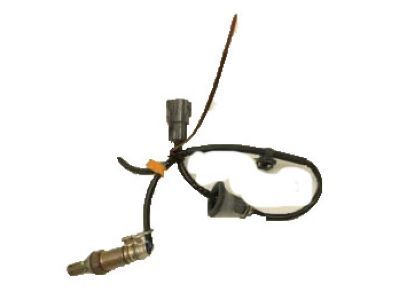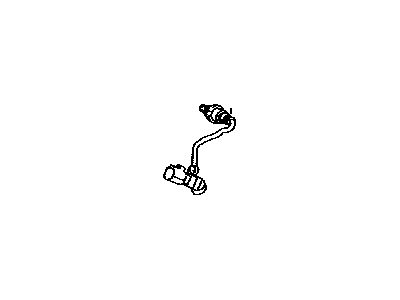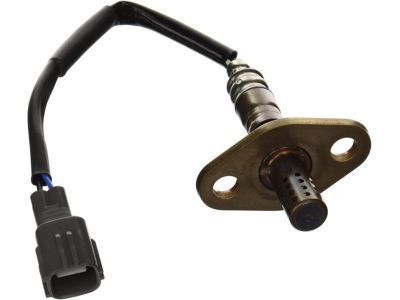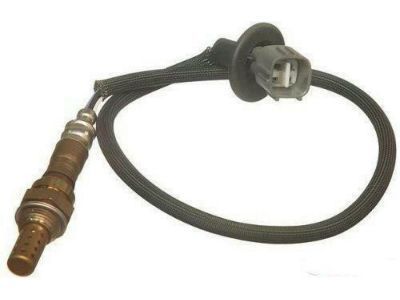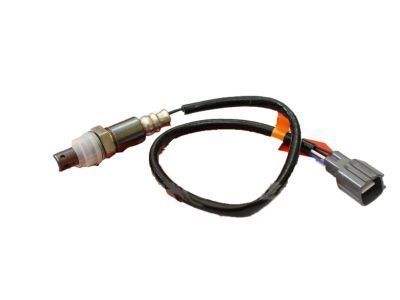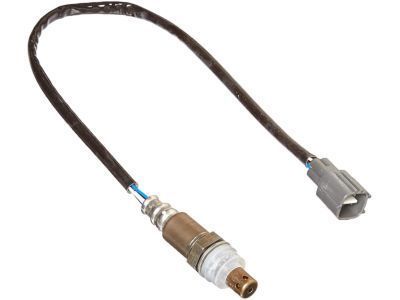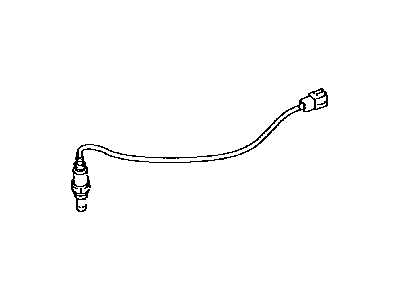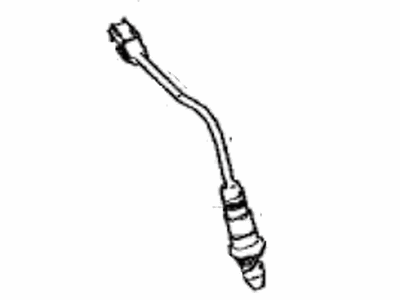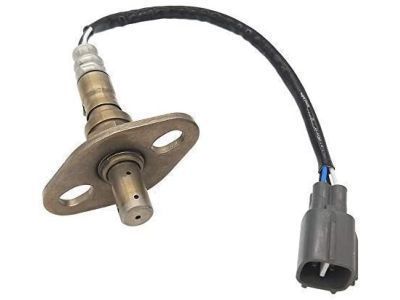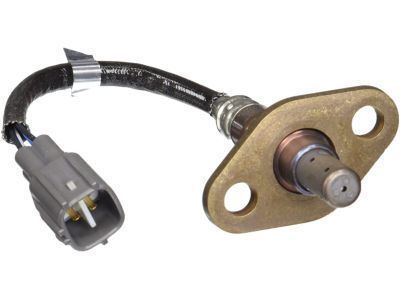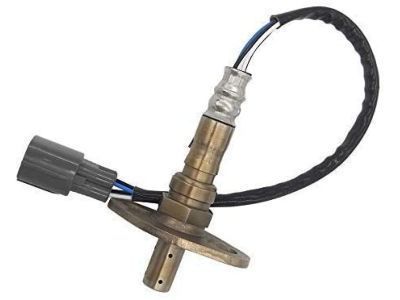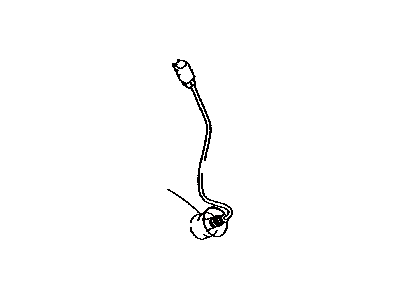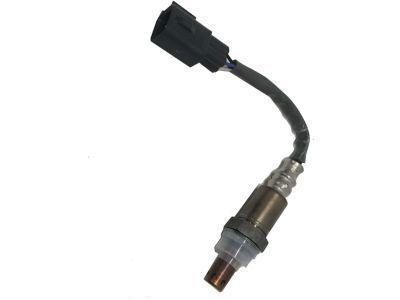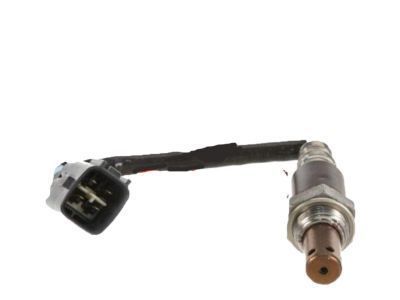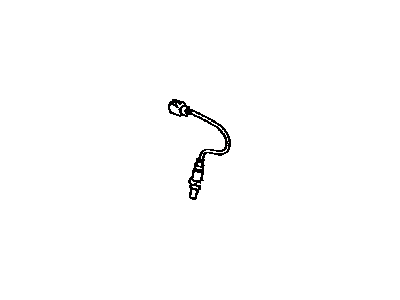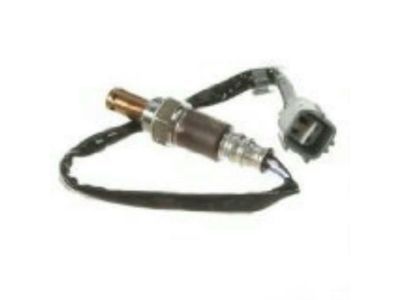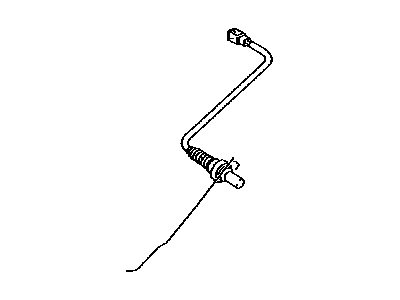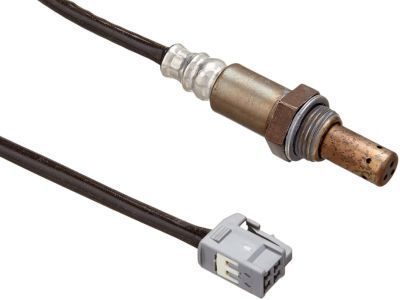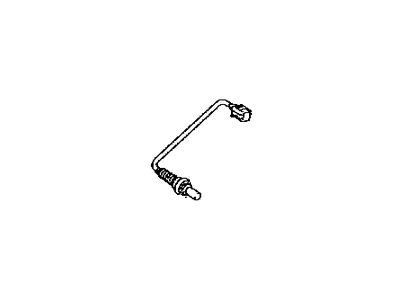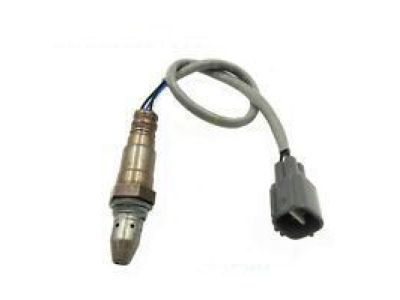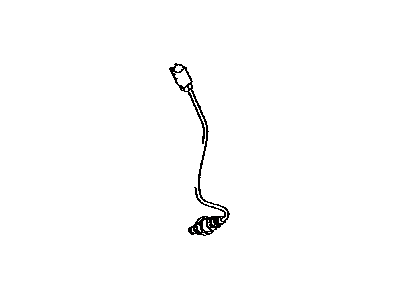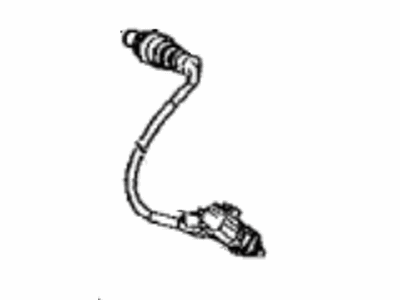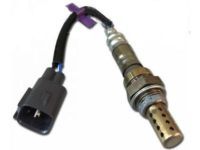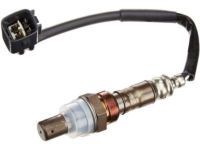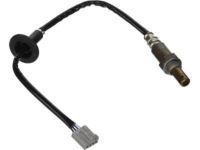

My Garage
My Account
Cart
Genuine Toyota Oxygen Sensor
Oxygen O2 Sensor- Select Vehicle by Model
- Select Vehicle by VIN
Select Vehicle by Model
orMake
Model
Year
Select Vehicle by VIN
For the most accurate results, select vehicle by your VIN (Vehicle Identification Number).
658 Oxygen Sensors found
Toyota Air Fuel Ratio Oxygen Sensor
Part Number: 89467-33210$172.33 MSRP: $245.00You Save: $72.67 (30%)Ships in 1-3 Business DaysProduct Specifications- Other Name: Sensor, Air Fuel Rat
- Manufacturer Note: RR
- Position: Rear
Toyota Air Fuel Ratio Oxygen Sensor
Part Number: 89467-71020$264.58 MSRP: $379.39You Save: $114.81 (31%)Ships in 1-3 Business DaysProduct Specifications- Other Name: Sensor, Air Fuel Ratio; Front Oxygen Sensor, Oxygen Sensor
- Position: Driver Side
Toyota Air Fuel Ratio Oxygen Sensor
Part Number: 89467-06030$195.10 MSRP: $279.76You Save: $84.66 (31%)Ships in 1-3 Business DaysProduct Specifications- Other Name: Sensor, Air Fuel Ratio; Oxygen Sensor, Sensor
- Replaces: 89467-33080
Toyota Oxygen Sensor
Part Number: 89465-39835$137.35 MSRP: $195.26You Save: $57.91 (30%)Ships in 1 Business DayProduct Specifications- Other Name: Sensor, Oxygen; Front Oxygen Sensor
Toyota Air Fuel Ratio Oxygen Sensor
Part Number: 89467-35011$229.78 MSRP: $329.49You Save: $99.71 (31%)Ships in 1-3 Business DaysProduct Specifications- Other Name: Sensor, Air Fuel Ratio; Oxygen Sensor, Sensor
- Position: Front
- Replaces: 89467-35010
Toyota Air Fuel Ratio Oxygen Sensor
Part Number: 89467-33040$207.86 MSRP: $298.05You Save: $90.19 (31%)Ships in 1-2 Business DaysProduct Specifications- Other Name: Sensor, Air Fuel Ratio; Oxygen Sensor
Toyota Oxygen Sensor
Part Number: 89465-06290$116.93 MSRP: $164.82You Save: $47.89 (30%)Ships in 1 Business DayProduct Specifications- Other Name: Sensor, Oxygen; Lower Oxygen Sensor, Rear Oxygen Sensor
- Replaces: 89465-06190, 89465-33520
Toyota Air Fuel Ratio Oxygen Sensor
Part Number: 89467-42170$168.00 MSRP: $238.84You Save: $70.84 (30%)Ships in 1-3 Business DaysProduct Specifications- Other Name: Sensor, Air Fuel Rat
- Product Specifications
- Other Name: Sensor, Oxygen; Rear Oxygen Sensor
Toyota Oxygen Sensor
Part Number: 89465-39855$133.60 MSRP: $189.94You Save: $56.34 (30%)Ships in 1-2 Business DaysProduct Specifications- Other Name: Sensor, Oxygen; Rear Oxygen Sensor
- Manufacturer Note: REAR
- Position: Rear
Toyota Air Fuel Ratio Oxygen Sensor
Part Number: 89467-33080$195.10 MSRP: $279.76You Save: $84.66 (31%)Ships in 1-3 Business DaysProduct Specifications- Other Name: Sensor, Air Fuel Ratio
- Replaced by: 89467-06030
Toyota Air Fuel Ratio Oxygen Sensor
Part Number: 89467-06250$199.62 MSRP: $286.25You Save: $86.63 (31%)Ships in 1-3 Business DaysProduct Specifications- Other Name: Sensor, Air Fuel Rat
- Manufacturer Note: FR
- Position: Front
Toyota Oxygen Sensor
Part Number: 89465-39735$137.35 MSRP: $195.26You Save: $57.91 (30%)Ships in 1-3 Business DaysProduct Specifications- Other Name: Sensor, Oxygen
Toyota Air Fuel Ratio Oxygen Sensor
Part Number: 89467-35060$219.92 MSRP: $315.35You Save: $95.43 (31%)Ships in 1-3 Business DaysProduct Specifications- Other Name: Sensor, Air Fuel Ratio
- Position: Front
Toyota Air Fuel Ratio Oxygen Sensor
Part Number: 89467-52060$204.50 MSRP: $293.23You Save: $88.73 (31%)Ships in 1-3 Business DaysProduct Specifications- Other Name: Sensor, Air Fuel Ratio; Air/Fuel Sensor, Oxygen Sensor
- Manufacturer Note: (J)
Toyota Air Fuel Ratio Oxygen Sensor
Part Number: 89467-04020$209.02 MSRP: $299.72You Save: $90.70 (31%)Ships in 1-3 Business DaysProduct Specifications- Other Name: Sensor, Air Fuel Ratio
- Manufacturer Note: W/O TAPE
Toyota Oxygen Sensor
Part Number: 89465-42170$122.84 MSRP: $174.63You Save: $51.79 (30%)Ships in 1-3 Business DaysProduct Specifications- Other Name: Sensor, Oxygen; Rear Oxygen Sensor
Toyota Oxygen Sensor
Part Number: 89465-02330$139.22 MSRP: $197.93You Save: $58.71 (30%)Ships in 1-2 Business DaysProduct Specifications- Other Name: Sensor, Oxygen; Rear Oxygen Sensor
Toyota Air Fuel Ratio Oxygen Sensor
Part Number: 89467-02090$185.01 MSRP: $265.29You Save: $80.28 (31%)Ships in 1-3 Business DaysProduct Specifications- Other Name: Sensor, Air Fuel Ratio
Toyota Air Fuel Ratio Oxygen Sensor
Part Number: 89467-02140$171.74 MSRP: $244.16You Save: $72.42 (30%)Ships in 1-2 Business DaysProduct Specifications- Other Name: Sensor, Air Fuel Rat
- Replaces: 89467-12290
| Page 1 of 33 |Next >
1-20 of 658 Results
About Toyota Oxygen Sensor
A rather compact part, your Toyota oxygen sensor is designed to detect how much oxygen is being expelled via the exhaust stream, so the engine can the deliver the correct proportion of fuel for it to run most efficiently. It works by checking the oxygen particulates produced in the exhaust, and then it sends that data to the engine computer so it can make the appropriate fuel adjustment. The oxygen sensor can be found in the exhaust manifold and possibly also in each catalytic converter of your automobile. In order to replace your oxygen sensor, you will need a special sensor removal socket.
Once the sensor is located, remove its electrical connector, then remove the sensor using the special attachment socket. Reinstall new part with anti-seize to Toyota's torque requirements. With the proper tools and attachment it is a very doable job, even for the novice DIY mechanic. If the oxygen sensor is failing, your gas mileage may suffer or your check engine light may appear. One can use a voltmeter to test if it operating as Toyota engineers intended from the factory. Replacing your failing oxygen sensor can restore drivability, gas mileage and it may eliminate a check engine light cause by a faulty sensor.
Come to ToyotaPartsDeal.com to taste the sweet of genuine OEM Toyota parts. Comparing to aftermarket parts, we guarantee that the part we sell to you can fit your Toyota perfectly. Don't take the risk on buying aftermarket parts, and don't waste your time and energy. Now, there is a good news that you can spend the same amount of money buying a genuine high-quality OEM Toyota parts as buying an aftermarket one, so why not give it a shot? The price showing on the website is up to 33% off MSRP, and it is cheaper than you expect.
Once the sensor is located, remove its electrical connector, then remove the sensor using the special attachment socket. Reinstall new part with anti-seize to Toyota's torque requirements. With the proper tools and attachment it is a very doable job, even for the novice DIY mechanic. If the oxygen sensor is failing, your gas mileage may suffer or your check engine light may appear. One can use a voltmeter to test if it operating as Toyota engineers intended from the factory. Replacing your failing oxygen sensor can restore drivability, gas mileage and it may eliminate a check engine light cause by a faulty sensor.
Come to ToyotaPartsDeal.com to taste the sweet of genuine OEM Toyota parts. Comparing to aftermarket parts, we guarantee that the part we sell to you can fit your Toyota perfectly. Don't take the risk on buying aftermarket parts, and don't waste your time and energy. Now, there is a good news that you can spend the same amount of money buying a genuine high-quality OEM Toyota parts as buying an aftermarket one, so why not give it a shot? The price showing on the website is up to 33% off MSRP, and it is cheaper than you expect.
Toyota Oxygen Sensor Parts Questions & Experts Answers
- Q: What is the general information and replacement procedure for servicing oxygen sensors and air/fuel ratio sensors on 2003 through 2009 Toyota 4Runner?A:When you are dealing with an oxygen sensor or an air/fuel ratio sensor, the pigtails that are permanently attached to it cannot be unplugged; once the electrical connectors are broken off or pulled off, the sensor is considered unusable. These connectors, the louvered end of the sensor, and any mating surfaces should remain free of grease, dirt and other contaminants, and reagents such as cleaning solvents should not be used on these sensors. One has to be careful not to put too much pressure on the sensors or drop them, and if the sensors use a silicone boot, it has to be fitted appropriately since heat has a potential to melt it and thus making the sensors to function wrong. Altogether there are four oxygen sensors, which one is upstream from the engine and the second is downstream for each cylinder bank. Since these sensors are mounted in an exhaust manifold or pipe which shrinks when cool, they may be rather tight when the engine is cold; if one lubricates the mounting threads with an oil, it will be easier to unscrew them but one has to exercise care not to burn the fingers as the engine is running. First of all, check that the ignition key is off and securely lift the vehicle with help of jackstands. The upstream sensors are positioned on the outlet of exhaust collectours above the upstream catalysts, the left upstream sensor is situated above the left catalytic converter while the right upstream sensor is situated above the right catalytic converter. To replace an upstream sensor, find out the position of the upstream sensor, follow the lead of the electrical wire till the connector and then detach the wire, use a wrench to remove a sensor by unfastening its nuts with anti-seize compound then tighten it with the recommended torque. The process of installation is done in the opposite way as the removal one. The downstream sensors are fitted on the front exhaust pipe assembly upstream the downstream catalysts; the location of the downstream sensor is to loosen the electrical connector and to unscrew the sensor using an oxygen sensor socket or wrench, applying anti seize compound on the threads to tighten them to the specified torque On the installation, the process is reversal to the removal.
- Q: What is the general information regarding On-Board Diagnostics II (OBD-II) engine management systems and oxygen sensors on 2002 through 2006 Toyota Avalon?A:OBD-II equipped vehicles with C engine management systems can check the validity of the feedback loop of the oxygen sensor with the PCM with the help of upstream oxygen sensor or air/fuel sensor prior to the catalytic converter and the downstream oxygen sensor located post the converter. The upstream sensor is mounted on the exhaust manifold and the downstream sensor which is heated is installed after the catalytic converter. While distinguishing between oxygen sensors and air/fuel sensors, one should note that the air/fuel concepts function differently, as for the air/fuel sensor, the output voltage depends on the ratio of air to fuel and does not change at the stoichiometric point. The permanently connected pigtail and electrical connector must not be damaged when servicing these sensors; dust and grime should not get in contact with the connector or the end of the sensor; nothing should be poured on these sensors; and they must be handled carefully. Before replacing a sensor one has to warm the engine so as make removal easier, the negative terminal of the battery should be removed and the sensor harness should be reached. The upstream sensor can be easily replaced with out lifting up the car while the downstream sensor will need the car to be supported on jackstands. It is suggested that one should use a slotted socket to do it, anti-seize compound should be applied to the threads of the sensor before assembly. Finally the sensor is safely locked in place and the electrical connector joined back, the vehicle should be lowered, as well as tested on the road so that there is no trouble code existing.
- Q: What is the general information about On-Board Diagnostics-II (OBD-11) engine management systems and oxygen sensors on Toyota Sienna?A:All OBD-11 equipped vehicles use engine management systems to highlight the consistency of the feedback loop between the oxygen sensor and the PCM using an oxygen or air/fuel sensor before the catalytic converter and another oxygen sensor after it to give PCM a record regarding converter efficiency. These models include three sensors; with upstream sensors located in the exhaust manifolds as well as a downstream sensor placed after the catalytic converter while the upstream sensors differ with region and year, air/fuel sensors are used in models produced after 2001. The principle of oxygen sensors working as galvanic batteries is operationally linked with the PCM which controls the air/fuel mix depending on the voltage output; the effectiveness is related to electrical connections, no blockage to air to the sensor, the right operating temperature, and if the fuel used is unleaded. If the oxygen sensor provides a stable voltage less than 1.45 volts as RPM increases when the engine has normal temperature, PCM will store a trouble code. In the event of administration failure of the different sensors, the PCM switches to open loop control of fuel. Likewise, the air/fuel sensor is also an interface between the PCM as it reports a variable voltage which is proportional to the AFM, similar to the function of an oxygen sensor but first needs warm up. Measures that should not be taken during servicing of the sensor include; damage of the attached pigtail and an electrical connector, exposure of the sensor to contaminants, and use of cleaning solvents on the sensor part, and proper handling of the sensor with integrity.
Related Toyota Parts
Browse by Model
4Runner Oxygen Sensor 86 Oxygen Sensor Avalon Oxygen Sensor C-HR Oxygen Sensor Camry Oxygen Sensor Celica Oxygen Sensor Corolla Cross Oxygen Sensor Corolla Oxygen Sensor Corolla iM Oxygen Sensor Corona Oxygen Sensor Cressida Oxygen Sensor Crown Oxygen Sensor Echo Oxygen Sensor FJ Cruiser Oxygen Sensor GR Corolla Oxygen Sensor GR Supra Oxygen Sensor GR86 Oxygen Sensor Grand Highlander Oxygen Sensor Highlander Oxygen Sensor Land Cruiser Oxygen Sensor MR2 Oxygen Sensor MR2 Spyder Oxygen Sensor Matrix Oxygen Sensor Paseo Oxygen Sensor Pickup Oxygen Sensor Previa Oxygen Sensor Prius AWD-e Oxygen Sensor Prius C Oxygen Sensor Prius Oxygen Sensor Prius Prime Oxygen Sensor Prius V Oxygen Sensor RAV4 Oxygen Sensor RAV4 Prime Oxygen Sensor Sequoia Oxygen Sensor Sienna Oxygen Sensor Solara Oxygen Sensor Starlet Oxygen Sensor Supra Oxygen Sensor T100 Oxygen Sensor Tacoma Oxygen Sensor Tercel Oxygen Sensor Tundra Oxygen Sensor Van Oxygen Sensor Venza Oxygen Sensor Yaris Oxygen Sensor Yaris iA Oxygen Sensor
